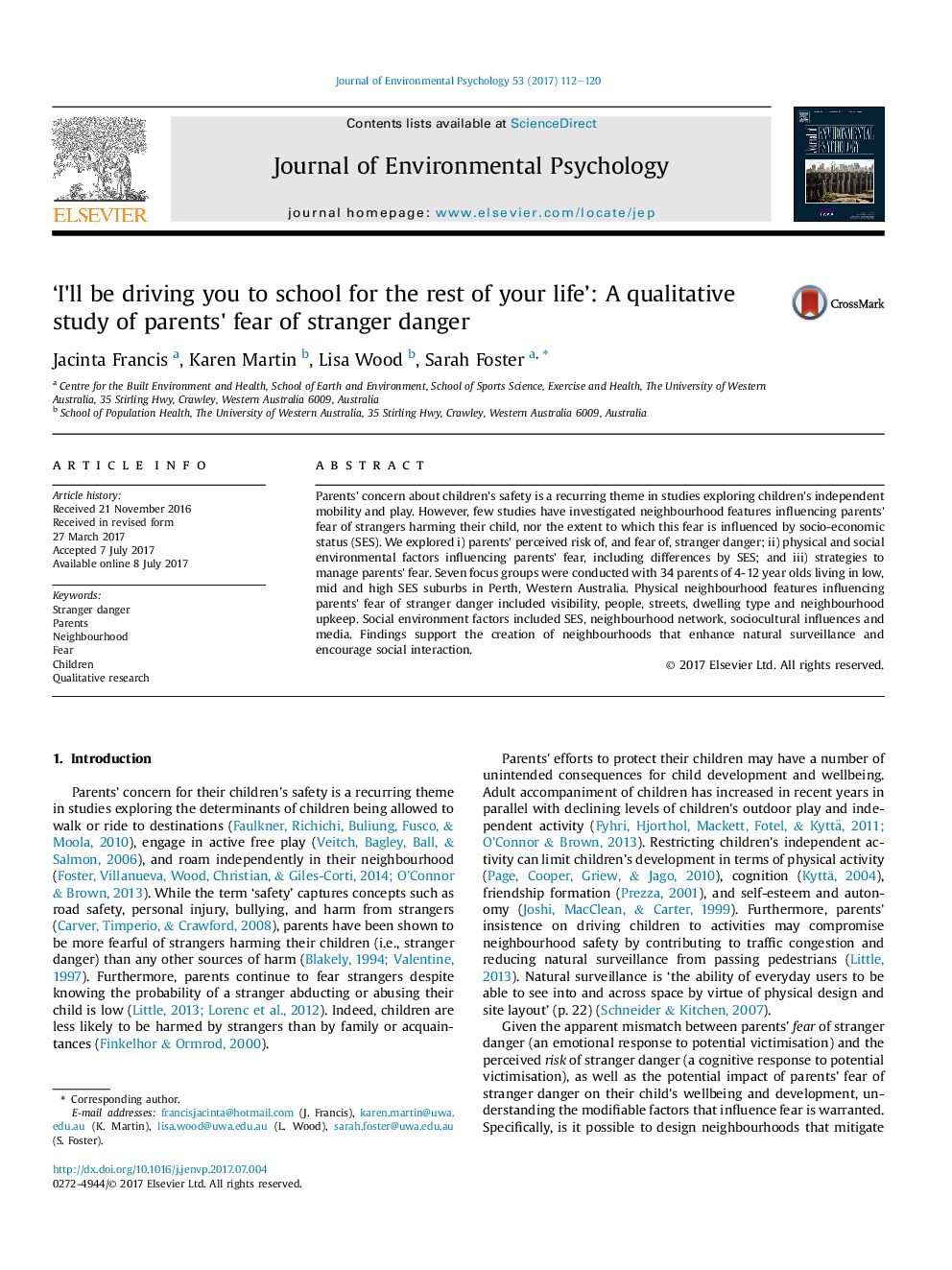| Article ID | Journal | Published Year | Pages | File Type |
|---|---|---|---|---|
| 5034883 | Journal of Environmental Psychology | 2017 | 9 Pages |
â¢Low perceived risk of harm may not alleviate parents' fear of stranger danger.â¢Some neighbourhood features that aggravate parents' concerns may alleviate others.â¢Visibility, people, streets, dwelling type and upkeep influence parents' fear.â¢Neighbourhoods encouraging natural surveillance alleviate parents' fear.â¢Neighbourhoods supporting positive social interaction alleviate parents' fear.
Parents' concern about children's safety is a recurring theme in studies exploring children's independent mobility and play. However, few studies have investigated neighbourhood features influencing parents' fear of strangers harming their child, nor the extent to which this fear is influenced by socio-economic status (SES). We explored i) parents' perceived risk of, and fear of, stranger danger; ii) physical and social environmental factors influencing parents' fear, including differences by SES; and iii) strategies to manage parents' fear. Seven focus groups were conducted with 34 parents of 4-12 year olds living in low, mid and high SES suburbs in Perth, Western Australia. Physical neighbourhood features influencing parents' fear of stranger danger included visibility, people, streets, dwelling type and neighbourhood upkeep. Social environment factors included SES, neighbourhood network, sociocultural influences and media. Findings support the creation of neighbourhoods that enhance natural surveillance and encourage social interaction.
